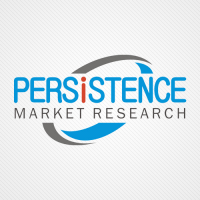Captan Market - PMR's Analysis of Global Key Trends, Drivers, and Restraints from Supply and Demand Perspectives.
Persistence Market Research Pvt. Ltd is released new forthcoming report on title "Captan Market: Global Industry Analysis and Forecast 2015 - 2021".

New York, NY -- (SBWire) -- 12/09/2015 --Captan is a white or pale yellowish brown-colored compound. It is a fungicide which belongs to the class of Phthalimides. In its pure form captan is a colorless crystal having a pungent smell. It is generally used as a pesticide as well as mixed with other components to form a pesticide mixture, which has better effectiveness. The U.S. Environment Protection Agency classified captan as a Class 4 toxic chemical, which means it is practically non toxic. However when in higher concentration, it is nauseating to the human eyes and skin. Captan is disease-resistant to vegetables, fruits and ornamental plants. Accounting to its wide applications, captan is useful in both agricultural and domestic uses. The U.S Environment Protection Agency stated captan as a potential carcinogen. Although in 2004 it was reclassified as non-toxic as there was no experimental proof found which could support the prediction. Captan is sold under different trade names such as Merpan, Orthocide, Vancide 89, Clomitance and Argox in the market.
Request Full Brochure of this report: http://www.persistencemarketresearch.com/samples/6940
Captan is the preferred fungicide as it also improves the external appearance of the fruits making it look healthy and bright. The major use of captan is in the cultivation of apples. Captan is protective and curative against diseases such as white rot, black rot, bitter rot and blossom end rot, occurring on apples. More than half of the apple orchids in the U.S. are treated with captan-containing fungicides. It is also extensively used in the cultivation of almonds and strawberries. Captan is applied in packaging boxes to prevent the fruits and vegetables from rotting while transportation. Captan is used in leather and plastic products as preservatives against fungal growth. On the agricultural crops, Captan is sprayed a month before harvesting, to protect the crops against diseases such as fire blight and rusts. However captan has a couple of spray incompatibilities such as it should not be mixed with sulfur, lime, oil or other alkaline medium as the resultant mixture may injure the plant parts under high temperature and humidity. Use of Captan for the cultivation and storage of food crops was banned in the U.S. in 1989 as it was thought to be a carcinogen. However the use of this compound resumed post several decades after the U.S. Environment Protection Agency classified captan as a non toxic chemical.
Captan is considered as one of the widely used fungicide and its use in terms of volume has increased drastically owing to its ability to be used in a broad spectrum of applications. Increasing number of agricultural activities has fuelled the demand for fungicides in the Asia-Pacific region. Crops become disease-prone when they are subjected to drastic climatic changes. Over the recent years, North America has witnessed these climatic changes which in turn have fuelled the demand for fungicides for crop protection applications. Asia-Pacific region is leading in terms of growth rate and North America with regards to consumption .In Europe farmers are opting fungicides over other products such as herbicides and insecticides as fungicides are comparatively cheaper than the latter agrochemicals and they have a greening effect which gives the crop a fresh look. On account of these factors, demand for fungicides is substantially increasing in Europe, which has further boosted the demand for captan-containing fungicides. Emerging economies such as China, India and Brazil have the largest agricultural sector and are expected to boost up the demand for agrochemicals as well as fungicides containing captan. Manufacturers have started developing fungicidal complex products which is resistance to more than one disease. Triazoles and Strobilurines fungicides are the some of the key competitors of captan-based fungicides.
Request Full TOC: http://www.persistencemarketresearch.com/toc/6940
Arysta LifeScience, BASF SE, Chevron Phillips Chemical Company, Crop Care Australasia Pty Ltd, and Makhteshin Agan of North America, Inc., are some of the key players in the Captan market.
Key points covered in the report
1) Report segments the market on the basis of types, application, products, technology, etc (as applicable)
2) The report covers geographic segmentation
North America
Europe
Asia
RoW
3) The report provides the market size and forecast for the different segments and geographies for the period of 2010 to 2020
4) The report provides company profiles of some of the leading companies operating in the market
5) The report also provides porters five forces analysis of the market.-
About Persistence Market Research (PMR)
Persistence Market Research (PMR) is a full-service market intelligence firm specializing in syndicated research, custom research, and consulting services. PMR boasts market research expertise across the Healthcare, Chemicals and Materials, Technology and Media, Energy and Mining, Food and Beverages, Semiconductor and Electronics, Consumer Goods, and Shipping and Transportation industries. The company draws from its multi-disciplinary capabilities and high-pedigree team of analysts to share data that precisely corresponds to clients' business needs.
PMR stands committed to bringing more accuracy and speed to clients' business decisions. From ready-to-purchase market research reports to customized research solutions, PMR's engagement models are highly flexible without compromising on its deep-seated research values.
Media Relations Contact
Glen Hare
Marketing Head
Persistence Market Research Pvt. Ltd
646-568-7751
http://www.persistencemarketresearch.com/market-research/captan-market.asp
View this press release online at: http://rwire.com/647739